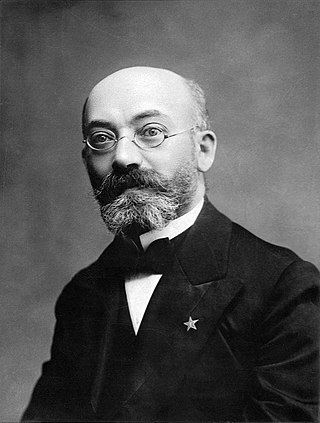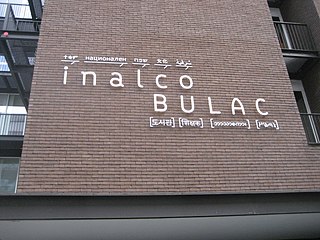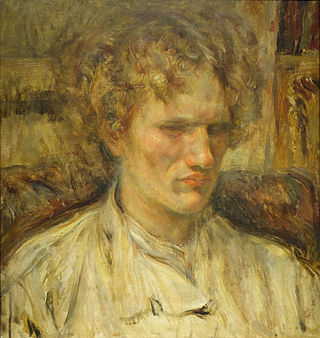
Georges Kersaudy (born 1921 in Le Havre, died 18 June 2015) was a French translator, reviewer, Esperantist and polyglot. [1]

Georges Kersaudy (born 1921 in Le Havre, died 18 June 2015) was a French translator, reviewer, Esperantist and polyglot. [1]
As a teenager, Kersaudy began learning several Romance and Germanic languages, discovering at 15 that the knowledge of Esperanto gave him privileged access to the languages of Central and Eastern Europe. From 1941 to 1946 he earned degrees at the Sorbonne in German, American literature and civilization, modern Scandinavian languages and literature and Romance philology. During the same period he earned diplomas in Russian, Romanian, Hungarian and Finnish from the prestigious French National Institute for Oriental Languages and Civilizations. He also completed three years of Turkish and Serbo-Croatian, as well as two years of Persian, declaring that if he could have remained in Paris, he would have continued his studies. [2]
During the wartime occupation of France from 1940 to 1944, Kersaudy was part of a resistance network in Paris. He was twice arrested, but managed to escape, thanks in part to his knowledge of languages. Thanks to an unusual memory and a genuine interest in languages ("After ten, it becomes very easy", he said), Kersaudy also acquired a good knowledge of many languages, which he maintained in subsequent years through travels and the publication of new language methods, including the Assimil series, eventually learning 56 languages.
He started his career at the French Ministry of Foreign Affairs with posts in Moscow and Belgrade, where he was vice-consul. [2] He then became a translator for the United Nations, serving seven years in New York, three years in Bangkok and later in Vienna, Rome and other European cities. [2] Later he served as a translation supervisor at the European Union's Council of Ministers. He has held positions in various capitals on four continents, while participating in several missions around the world, and served as an expert translator for the French Court of Appeal and the Paris Superior Court (Tribunal de grande instance).
Georges Kersaudy retired in 1987. He is the father of the historian François Kersaudy.
In June 2004, he headed the pan-European Île-de-France constituency list for Europe–Democracy–Esperanto, a party founded to promote the increased use of Esperanto in the European Union, but won only 5,789 votes (0.21% of votes cast). [1] Together with the noted Esperanto author and psychotherapist Claude Piron and the Danish diplomat Eskil Svane, he founded a United Nations Esperanto association. [2]

Claude Piron, also known by the pseudonym Johán Valano, was a Swiss psychologist, Esperantist, translator, and writer. He worked as a translator for the United Nations from 1956 to 1961 and then for the World Health Organization.

Esperanto is the world's most widely spoken constructed international auxiliary language. Created by the Warsaw-based ophthalmologist L. L. Zamenhof in 1887, it was intended to be a universal second language for international communication, or "the international language". Zamenhof first described the language in Dr. Esperanto's International Language, which he published under the pseudonym Doktoro Esperanto. Early adopters of the language liked the name Esperanto and soon used it to describe his language. The word esperanto translates into English as "one who hopes".

Esperantujo or Esperantio is the Esperanto community; the community of speakers of the Esperanto language and their culture, as well as the places and institutions where the language is used. The term is used "as if it were a country."

L. L. Zamenhof developed Esperanto in the 1870s and '80s. Unua Libro, the first print discussion of the language, appeared in 1887. The number of Esperanto speakers have increased gradually since then, without much support from governments and international organizations. Its use has, in some instances, been outlawed or otherwise suppressed.

L. L. Zamenhof was an ophthalmologist who lived for most of his life in Warsaw. He is best known as the creator of Esperanto, the most widely used constructed international auxiliary language.
An international auxiliary language is a language meant for communication between people from all different nations, who do not share a common first language. An auxiliary language is primarily a foreign language and often a constructed language. The concept is related to but separate from the idea of a lingua franca that people must use to communicate.

lernu! is a multilingual, web-based free project for promoting and teaching Esperanto. The name Lernu comes from the imperative form of the Esperanto verb lerni, meaning "to learn". The site is run by E@I, an international youth organization, which started as a working group of the World Esperanto Youth Organization.
The Delegation for the Adoption of an International Auxiliary Language was a body of academics convened in the early part of the 1900s (decade) to decide on the issue of which international auxiliary language should be chosen for international use. The ultimate decision of the committee charged by the Delegation was to adopt the Esperanto language, but with certain reforms. The result became a distinct language known as Ido.

Louis Couturat was a French logician, mathematician, philosopher, and linguist. Couturat was a pioneer of the constructed language Ido.

Antoni Grabowski was a Polish chemical engineer, and an activist of the early Esperanto movement. His translations had an influential impact on the development of Esperanto into a language of literature.
Esperanto and Interlingua are two planned languages with different approaches to the problem of providing an International auxiliary language (IAL). Esperanto has many more speakers; the number of speakers is c. 100,000-2,000,000. On the other hand, the number of speakers is c. 1,500 for Interlingua, but speakers of the language claim to be able to communicate easily with the c. 1 billion speakers of Romance languages, whereas Esperanto speakers can only communicate among each other.

Institut national des langues et civilisations orientales(English: National Institute for Oriental Languages and Civilizations), abbreviated as INALCO, is a French university specializing in the teaching of languages and cultures from the world. Its coverage spans languages of Central Europe, Africa, Asia, America, and Oceania.
Esperanto and Ido are constructed international auxiliary languages, with Ido being an Esperantido derived from Esperanto and Reformed Esperanto. The number of speakers is estimated at 100 thousand to 2 million for Esperanto, whereas Ido is much fewer at 100 to 1 thousand.

Vasili Yakovlevich Eroshenko was a blind writer, translator, esperantist, linguist, traveler, poet and teacher. He wrote in Esperanto and Japanese.

Michel Duc Goninaz was a French Esperantist known worldwide for his 2002 revision of La Plena Ilustrita Vortaro de Esperanto.
Ferdinand Jean Marie Valentin Duviard was a French high school teacher in Cahors, a writer and novelist. He became an Esperantist in 1905, wrote for many publications and was active in Esperanto youth groups. With Charles Pichon he co-founded Francan Federacion de Junaj Esperantistoj.
The initiator of Esperanto, L. L. Zamenhof, translated the entire Hebrew Bible into Esperanto. His translation has been much admired by Esperantists and is widely held up as a model or exemplar for other Esperanto authors and translators. Other translators have also edited and published Esperanto versions of the New Testament and Apocrypha.
Medicina Internacia Revuo is the official organ of Universala Medicina Esperanto Asocio, an organization that gathers physicians, pharmacists, and other medical professionals who have a working knowledge of Esperanto. The twice-yearly journal publishes articles that have undergone peer review and that are written in various languages, including English and Polish; abstracts are provided in English and Esperanto. The journal publishes broadly within the medical sciences, has an internationally renowned board of editors, and is included in the Index Copernicus database. The journal is available gold open access, but no author fees are charged.

Mark Fettes is an Esperantist and university professor of education, and former President of the World Esperanto Association, known by its Esperanto initials as UEA.